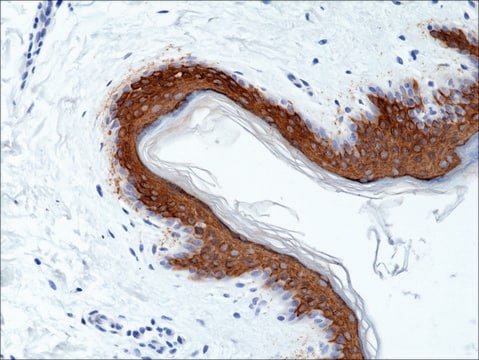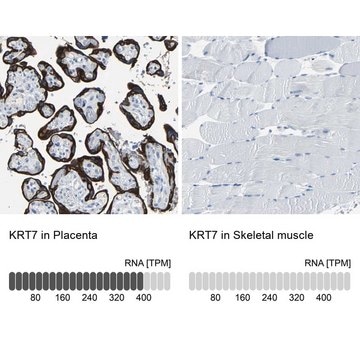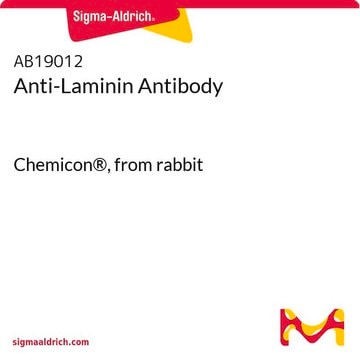MAB1922
Anti-Laminin α2 Antibody, clone 5H2
ascites fluid, clone 5H2, Chemicon®
Synonym(s):
Laminin M chain, Merosin heavy chain, laminin M, laminin alpha 2 subunit, laminin, alpha 2
About This Item
Recommended Products
biological source
mouse
Quality Level
antibody form
ascites fluid
antibody product type
primary antibodies
clone
5H2, monoclonal
species reactivity
human, rabbit, monkey
manufacturer/tradename
Chemicon®
technique(s)
ELISA: suitable
cell culture | mammalian: suitable
immunofluorescence: suitable
immunohistochemistry: suitable
immunoprecipitation (IP): suitable
western blot: suitable
isotype
IgG1
NCBI accession no.
UniProt accession no.
shipped in
dry ice
target post-translational modification
unmodified
Gene Information
human ... LAMA2(3908)
rhesus monkey ... Lama2(715394)
General description
Specificity
Immunogen
Application
50% maximal binding to human merosin at 1:50,000 dilution from a previous lot.
Immunohistochemistry:
1:5,000 dilution from a previous lot was used for staining of 8 µm acetone-fixed cryostat muscle sections, prior to detection with a peroxidase-conjugated secondary antibody.
Immunofluorescence:
A previous lot of this antibody was used in immunofluorescent.
Affinity chromatography:
A previous lot of this antibody was used in IAP.
Immunoprecipitation:
A previous lot of this antibody was used in IP.
Optimal working dilutions must be determined by end user.
Cell Structure
ECM Proteins
Quality
Western Blot Analysis:
1:1000 dilution of this lot detected Laminin α2 (merosin) on 10 μg of Human Placenta lysate.
Target description
Physical form
Storage and Stability
Handling Recommendations: Upon receipt, and prior to removing the cap, centrifuge the vial and gently mix the solution. Aliquot into microcentrifuge tubes and store at -20°C. Avoid repeated freeze/thaw cycles, which may damage the IgG1 and affect product performance.
Analysis Note
Vascular breast carcinomas, Cultured embryonic retinal neurons and RGCs
Other Notes
Legal Information
Disclaimer
Not finding the right product?
Try our Product Selector Tool.
recommended
Storage Class Code
10 - Combustible liquids
WGK
WGK 1
Flash Point(F)
Not applicable
Flash Point(C)
Not applicable
Certificates of Analysis (COA)
Search for Certificates of Analysis (COA) by entering the products Lot/Batch Number. Lot and Batch Numbers can be found on a product’s label following the words ‘Lot’ or ‘Batch’.
Already Own This Product?
Find documentation for the products that you have recently purchased in the Document Library.
Our team of scientists has experience in all areas of research including Life Science, Material Science, Chemical Synthesis, Chromatography, Analytical and many others.
Contact Technical Service







